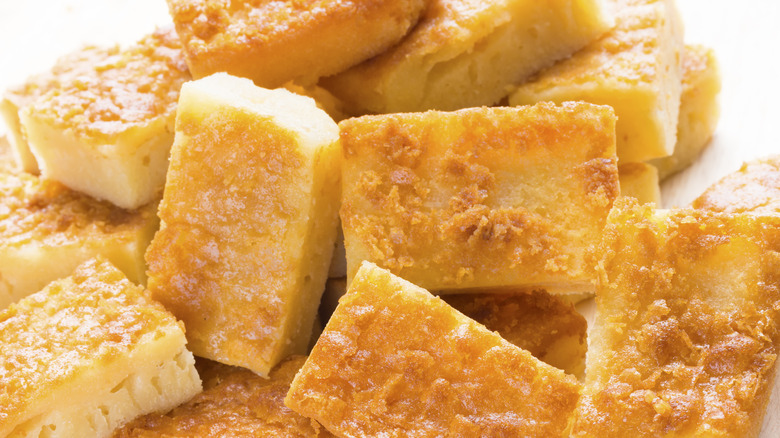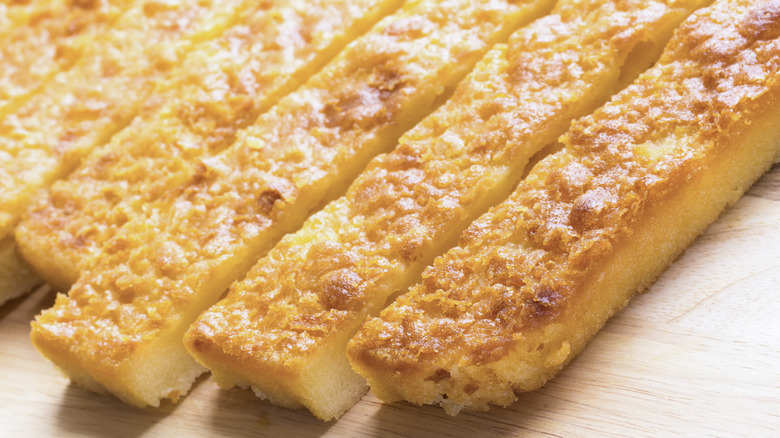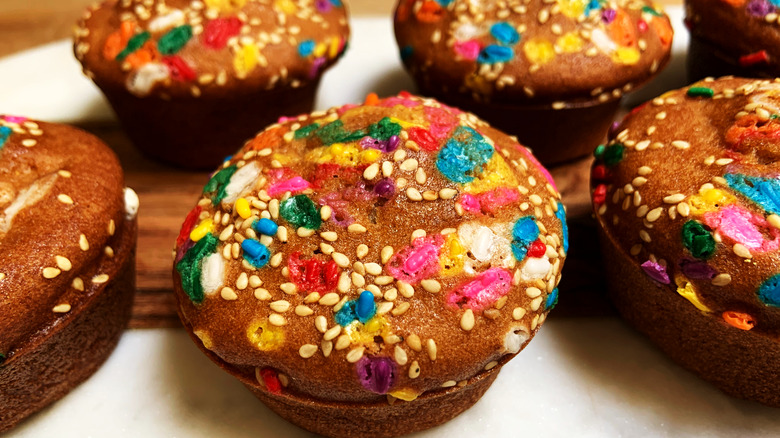What Is Butter Mochi And What Does It Taste Like?
Those of us who are lucky enough to have had mochi are more than likely to be head over heels in love with this Japanese-based treat. Made with sticky rice that has been soaked in water before it is steamed, mashed, and then pounded into a gummy paste, mochi can be served in a variety of ways. It can be enjoyed as a savory dish in the form of a grilled cake wrapped in seaweed or as a dessert when filled with anything sweet — from red bean paste to ice cream (via byFood).
While it has the same name and DNA as Japanese mochi, butter mochi finds its roots in Hawaii. The blog Onolicious Hawai'i describes it as a dessert bar akin to a blondie or brownie or the perfect cross between a vanilla butter cake and mochi. Butter mochi is made with glutinous rice flour (or mochiko) and coconut milk. Some recipes call for butter too, such as this delicacy from the New York Times. Although the taste and texture of butter mochi are reminiscent of the classic Filipino dessert bibingka, another rice flour cake, The Little Epicurean points out that its chewy consistency is more like that of the cassava cake.
Butter mochi's origin story is a mystery
To track down the beginnings of butter mochi, the New York Times found recipes of the local dessert in community cookbooks, going back generations. But neither the Times nor the internet can say exactly when or how butter mochi was born.
Certainly, butter mochi isn't likely to be as old or venerable as its Japanese cousin. But, according to ABC10 News, which recently profiled the owners of Osaka-Ya Japanese Confectionery shop in Sacramento, food historians trace mochi's origins back to the end of the Jomon period in 300 B.C. when rice was at the height of its cultivation. The treat clearly triggers a wave of longing and nostalgia for those who grew up enjoying butter mochi on the islands. As the New York Times reports, butter mochi has been a staple of Hawaiian cuisine for ages and a hit at social gatherings as well.
Variations on butter mochi
Its murky origin story doesn't make butter mochi, with its natural sweetness, any less delicious. Cooking sites have devoted endless space to this humble, fool-proof snack. The New York Times outlines the exact quantities of butter, eggs, sugar, and milk you will need if you prefer a custard or cake-like texture. Others, however, may experiment with the amount of milk. For example, this recipe from The Spruce Eats recommends adding evaporated milk to get the taste and flavor that you're looking for when eating butter mochi. Some even tart up the flavors of butter mochi by adding chocolate or a fruit-based glaze. Blogger Catherine Zhang prefers making them as cupcakes to enhance the crisp, caramelized texture she favors in a bite-size dessert.
For those who grew up with the cake and now make it for themselves, butter mochi celebrates the diverse history in Hawaii and Japan with subtle flavors that meld two distinct cultures.


